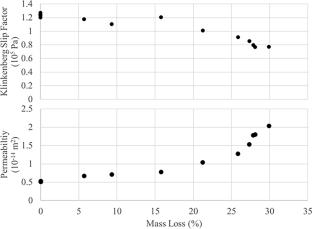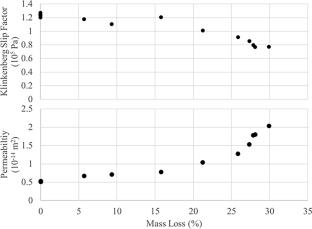An Experimental Method for Measuring Permeability of Fragile, Irregularly Shaped Porous Media
Abstract
Permeability is an important parameter characterizing ablative thermal protection system (TPS) materials as it impacts the internal pressure that builds within the material during the production of pyrolysis gas. Experiments to measure permeability must provide good sealing to ensure that the measured flow is only through the sample of interest; however, for TPS materials that have been partially charred, the sample geometry can complicate this measurement. Prior measurement techniques were found to be inadequate for such charred samples. A new method was developed which can robustly and repeatably mount and seal irregularly shaped centimeter scale samples of porous media such that their Darcy permeabilities and Klinkenberg molecular slip coefficients can be measured. Such measurements were achieved using steady flows of nitrogen at absolute pressures up to 1000 Torr. Two techniques were devised for processing test articles to be compatible with the experiment. The first of these methods involves the direct casting of porous media into thermoset resin and can accommodate uneven or irregularly shaped test articles as occur for charred TPS. The second method involves the mounting of porous media into a constrictive sleeve lined with thermoplastic adhesive. This second method better preserves the two outer surfaces of the TPS sample. A commercially available porous TPS material, Zuram, was subjected to partial thermal decomposition in nitrogen and then studied using the developed techniques. The method for sealing the samples was found to enable measurements on these charred samples and showed the permeability increases by a factor of 4 in a nonlinear manner during the early stages of mass loss.



 求助内容:
求助内容: 应助结果提醒方式:
应助结果提醒方式:


